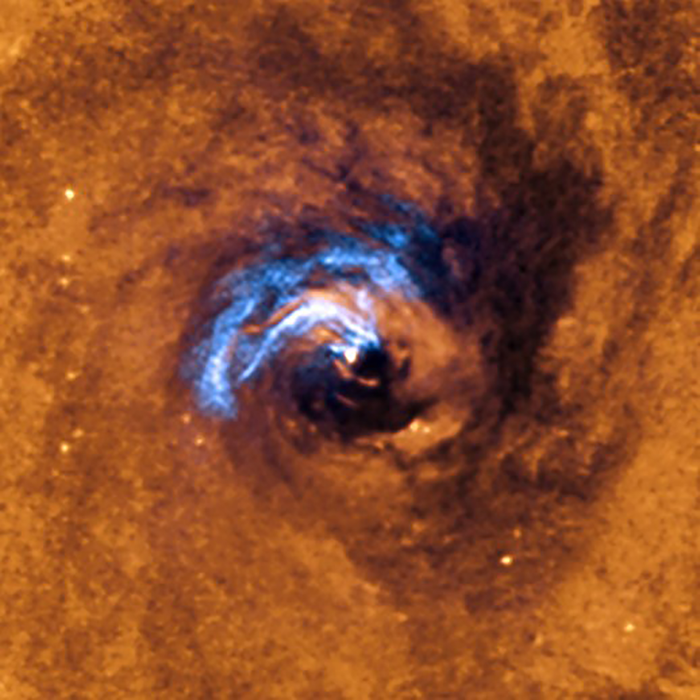When you think of a supermassive black hole eating its way through the universe, you somehow cannot help but think of a larger-than-life black hole that just slurps up anything and everything in its path at a speed you cannot fathom. That may not exactly be the case.
Astronomers have used the Hubble Space Telescope as well as the Very Large Telescope and the Atacama Large Millimeter Array to have a closer look at the eating habits of a supermassive black hole.
What they found out, according to Space, is that a supermassive black hole's "lengthy meals, however, are not very substantial."
Supermassive Black Hole's Eating Habits

The supermassive black hole that scientists studied is the one located at the heart of a galaxy known as NGC 1566. The NGC 1566 galaxy is around 40 million light-years away from Earth.
Scientists saw that before the supermassive black hole even began to eat, dusty materials already headed its way at a speed that can reach 50 miles per second. These materials then split into long, wispy streaks of dust that whirled around the nucleus before they were eventually sucked up.
"The black hole appears - at first - to have quite the appetite as it slurps up dust filaments that are reported to be several hundred light-years long and less than ten light-years wide," according to the article by Space. Scientists, however, do not think that a supermassive black hole's meal is very substantial.
"In this one, we calculate[d] the rate of infalling material to be much less than 1/100 the mass of the sun per year," Astronomer and lead author Almudena Prieto told Space in an email.
Related Article: Astronomers Caught Supermassive Black Hole Burping Twice For The First Time
Hubble Space Telescope and Very Large Telescope Image Black Hole Eating
The astronomers made use of the Hubble Space Telescope as well as the Very Large Telescope to study the eating habits of the supermassive black hole found in the NGC 1566 galaxy. The Atacama Large Millimeter Array in Chile was also used by the astromers in the study.
"This group of telescopes has given us a completely new perspective of a supermassive black hole, thanks to the imaging at high angular resolution and the panoramic visualization of its surroundings," according to Prieto.
What is a Supermassive Black Hole?
A supermassive black hole is considered as the largest type of black hole to exist.
According to COSMOS, most supermassive black holes are located too far away to be observed. Those that scientists have been able to study have a million to a billion times more mass than that of a stellar black hole.
Scientists also believe that supermassive black holes are usually located at the center of large galaxies. The Milky Way galaxy is one of those galaxies.
This article is owned by Tech Times
Written by Isabella James




